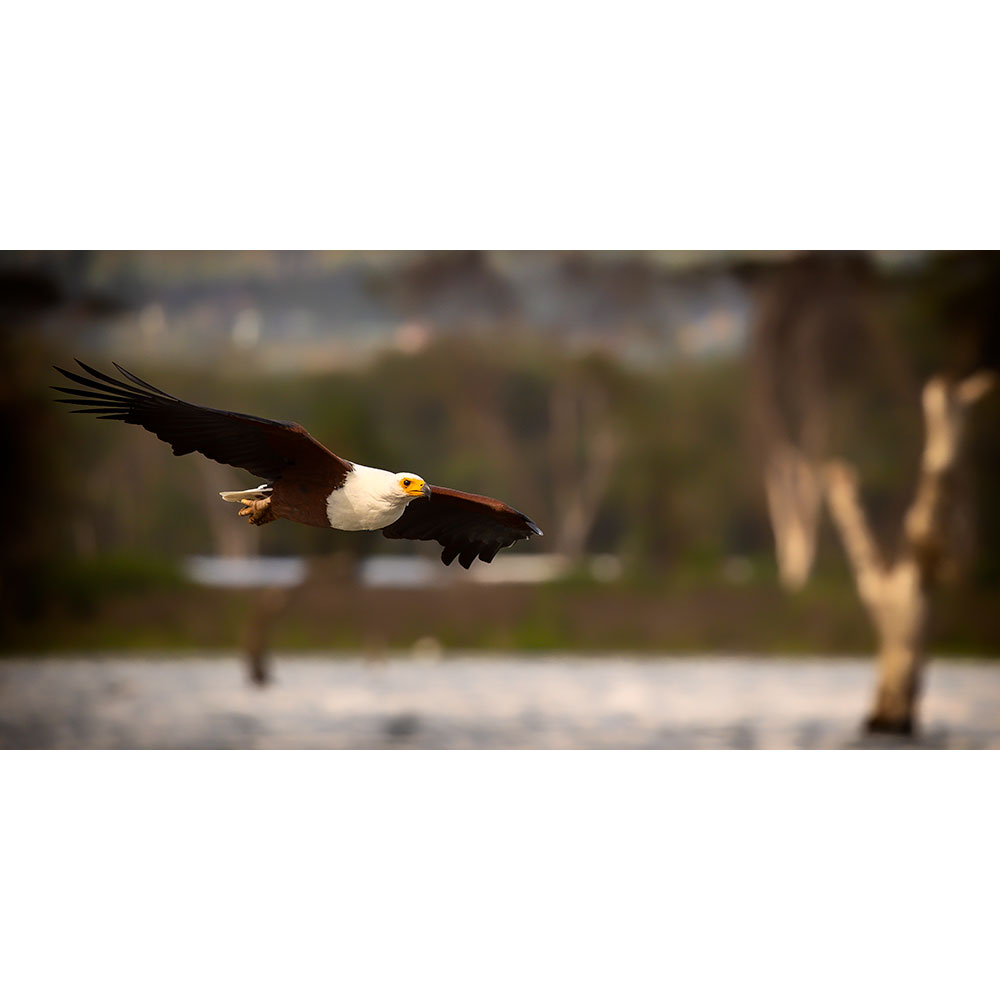Every effort on this Gallery site has been made to accurately represent the vibrant colours of Sam’s images. Due to differences in computer screens and certain other variations, the images here should only to be taken as a guide. Obviously, the colour and sharpness of a finished print are far superior to what can be presented on a small screen.
African Fish Eagle swoops
$200.00 – $2,800.00
The African fish eagle adult is a large, distinctive, chestnut-and-white eagle that sits prominently on perches near rivers, lakes, and other waterbodies. The scruffy immature is dark brown and mottled with white on head. In flight the white windows in the wings and pale, dark-tipped tail make the juvenile distinctive. It catches fish with a graceful, shallow plunge to the water’s surface, but it will also eat birds, reptiles, and carrion. It tosses its head backwards while making a loud penetrating “wheeee-ah-kleeuw-kleeuw-kluuu” call; it is one of the most distinctive bird sounds of Africa. Watching this Eagle swoop into the water and grab the fish was exhilarating.
Lake Victoria, the largest lake in Africa and chief reservoir of the Nile, lying mainly in Tanzania and Uganda but bordering on Kenya. Its area is 26,828 square miles (69,484 square km). Among the freshwater lakes of the world, it is exceeded in size only by Lake Superior in North America. It is an irregular quadrilateral in shape, and its shores, save on the west, are deeply indented. Its greatest length from north to south is 210 miles (337 km), its greatest breadth 150 miles (240 km). Its coastline exceeds 2,000 miles (3,220 km). Its waters fill a shallow depression in the centre of the great plateau that stretches between the Western and Eastern Rift Valleys. (See East African Rift System.) The lake’s surface is 3,720 feet (1,134 metres) above sea level, and its greatest ascertained depth is 270 feet (82 metres). Many archipelagos are contained within the lake, as are numerous reefs, often just below the surface of the clear waters. Lake Victoria has more than 200 species of fish, of which the Tilapia is the most economically important. The lake’s basin area covers 92,240 square miles (238,900 square km)..

